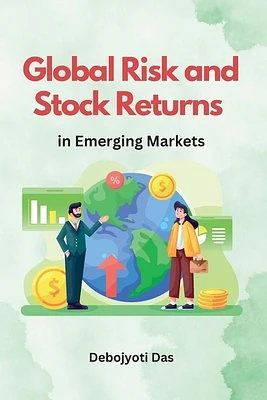Home
Making a Market for Acts of God: the Practice Risk Trading Global Reinsurance Industry
Loading Inventory...
Barnes and Noble
Making a Market for Acts of God: the Practice Risk Trading Global Reinsurance Industry
Current price: $72.00


Barnes and Noble
Making a Market for Acts of God: the Practice Risk Trading Global Reinsurance Industry
Current price: $72.00
Loading Inventory...
Size: Hardcover
*Product Information may vary - to confirm product availability, pricing, and additional information please contact Barnes and Noble
Reinsurance is a financial market that trades in the risk of unpredictable and devastating disasters - such as Hurricane Katrina, the Tohoku earthquake and tsunami, and the terrorist attacks on the World Trade Centre. Such disasters are increasing in both frequency and severity, with the cost of their losses mounting rapidly. Reinsurance insures insurance companies, enabling them to pay claims arising from these losses. It is thus a market mechanism that is a critical part of the social and economic safety net, helping to pick up the pieces after disasters. Yet, how is the risk of such disasters calculated and traded in a global market?
This book brings to life the reinsurance market through vivid real-life tales that draw from an ethnographic, "fly-on-the-wall" study of the global reinsurance industry over three annual cycles. The authors shadowed underwriters around the world as they traded risks through multiple disasters. For instance, this book takes readers into the desperate hours of pricing Japanese risks during March 2011, while the devastating aftermath of the Tohoku earthquake is unfolding. To show how the market works, the book offers authentic tales gathered from observations of reinsurers in Bermuda, Lloyd's of London, Continental Europe and SE Asia as they evaluate, price and compete for different risks as part of their everyday practice.
Understanding how this market for disasters works has never been more critical given the impact of climate change and increased global connectivity, where a flood in one country can trigger losses to supply chains around the world. The authors develop a novel concept of how global markets work, which advances scholarship and challenges current thinking about how financial markets trade in intangible assets such as risk.
This book will be useful to readers interested in markets for disasters, insurance, reinsurance and financial markets, and academics interested in the practice of financial markets specifically or the practice of strategy and organizations generally.
This book brings to life the reinsurance market through vivid real-life tales that draw from an ethnographic, "fly-on-the-wall" study of the global reinsurance industry over three annual cycles. The authors shadowed underwriters around the world as they traded risks through multiple disasters. For instance, this book takes readers into the desperate hours of pricing Japanese risks during March 2011, while the devastating aftermath of the Tohoku earthquake is unfolding. To show how the market works, the book offers authentic tales gathered from observations of reinsurers in Bermuda, Lloyd's of London, Continental Europe and SE Asia as they evaluate, price and compete for different risks as part of their everyday practice.
Understanding how this market for disasters works has never been more critical given the impact of climate change and increased global connectivity, where a flood in one country can trigger losses to supply chains around the world. The authors develop a novel concept of how global markets work, which advances scholarship and challenges current thinking about how financial markets trade in intangible assets such as risk.
This book will be useful to readers interested in markets for disasters, insurance, reinsurance and financial markets, and academics interested in the practice of financial markets specifically or the practice of strategy and organizations generally.


















